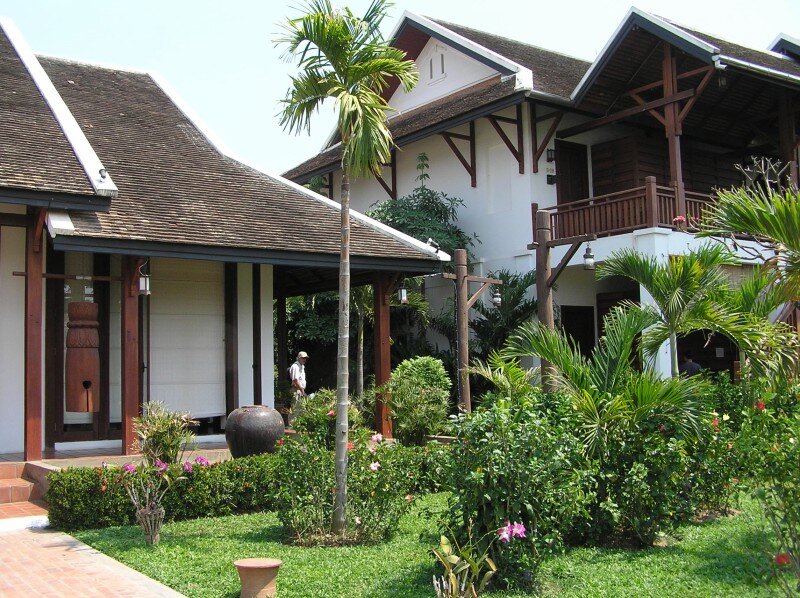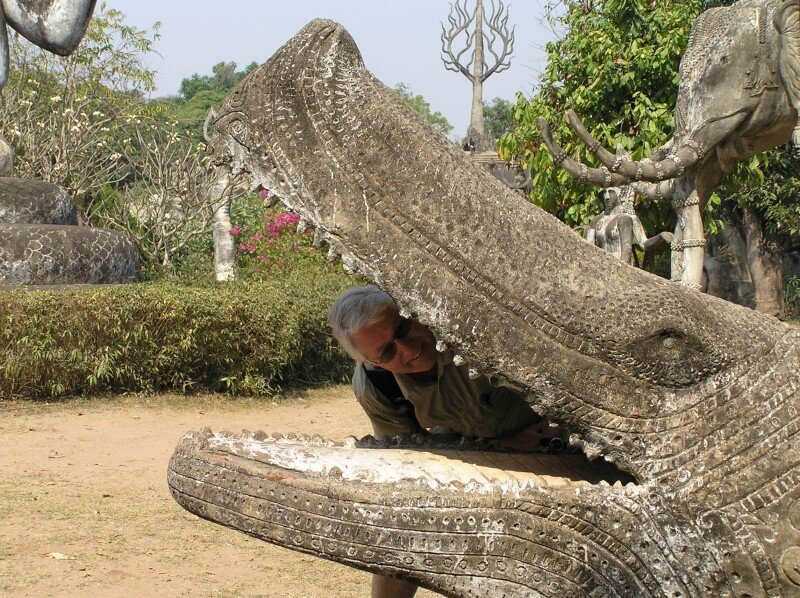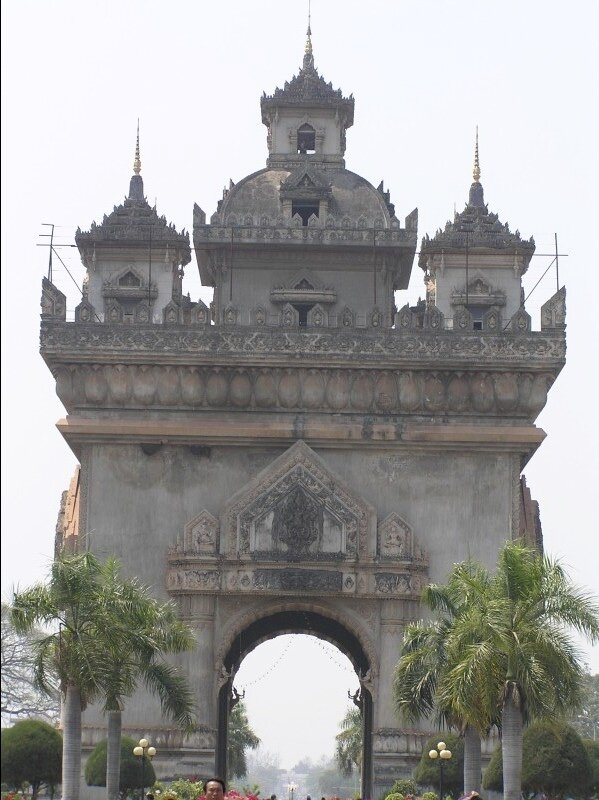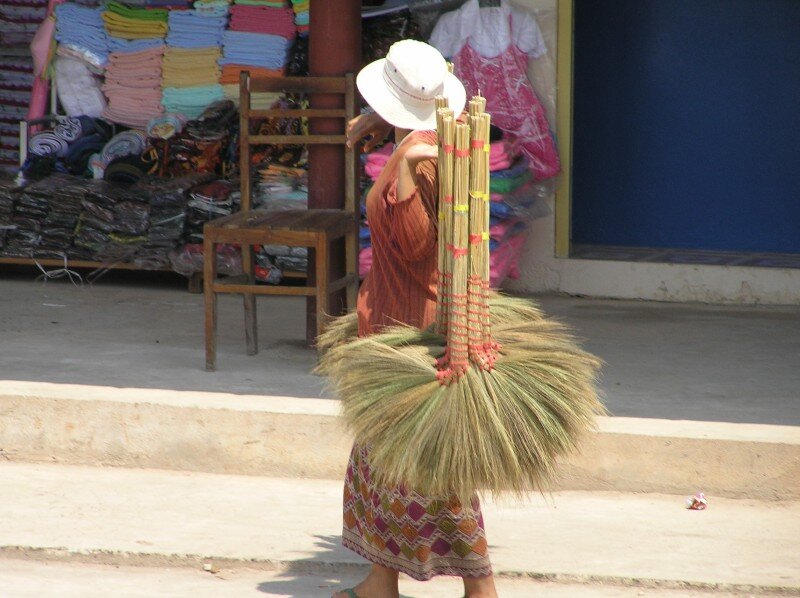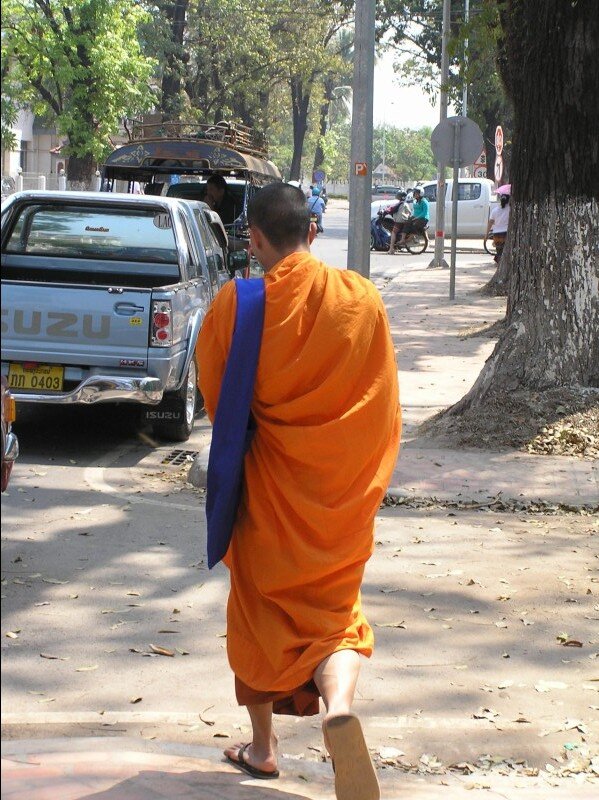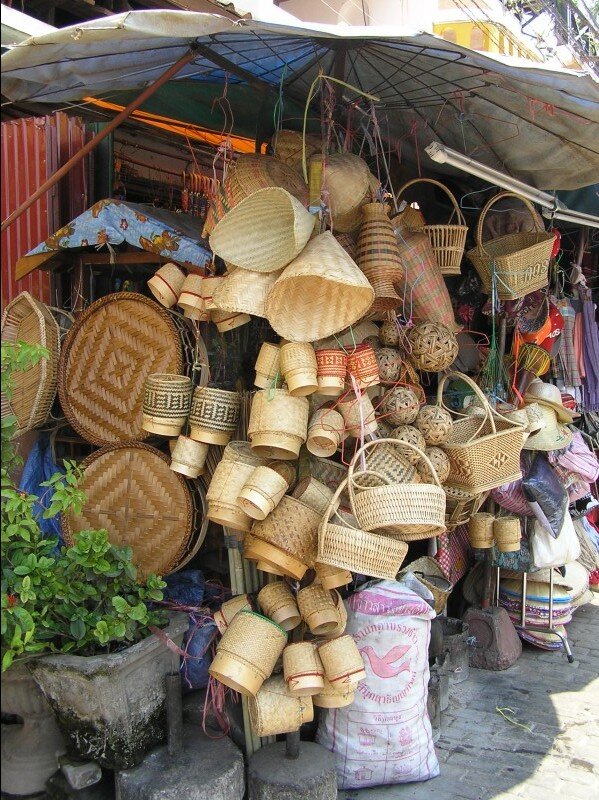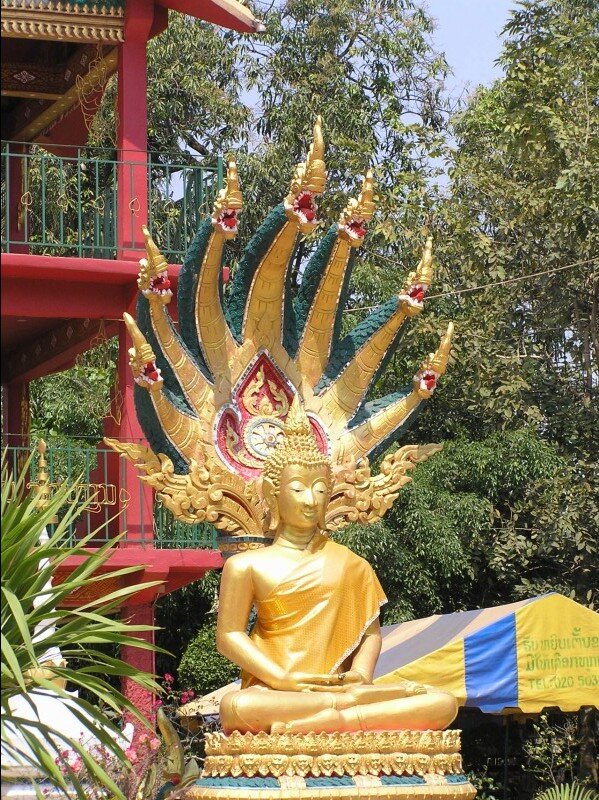Laos - a relatively small, landlocked country in Asia with some 7.5 million people. For hundreds of years it was a kingdom before coming under French rule. Now its communist leader rules the, mostly Buddhist, population as a socialistic republic although during the past few years things are getting more relaxed.
We flew into Vientiane, Laos where Laura, the librarian from the international school that had invited me as a visiting author, was waiting in the tiny airport. Through the balmy, dark night we were taken to a lovely hotel - an oasis of green, with small bungalows and a pool surrounded by palm trees and blossoming lotus. Our room has lots of mahogany wood and weavings. A gorgeous, modern bathroom and a large mosquito net over the kingsize bed. We slept like a log all night. No jet lag.
The first thing we learned in Laos, was that it had been under French occupation for a long time. And instead of the rice and broth I expected for breakfast, as in many Asian countries, we were thrilled to find warm croissants and great coffee. We were also surprised to discover that chopsticks are not used in Laos. People eat with fork and spoon, using the fork to shovel food onto the spoon. The French legacy also means fresh French bread, amazing pastries and stalls everywhere full of bacquettes.
Men walk along the dusty roads wearing long silk salongs, women are dressed in beautiful traditional weavings. Monks stroll through town on their flip-flops and orange robes, carrying parasols to shade their shaven heads from the sun. And everyone smiles.
We walk all over the city, find a bank to exchange dollars for kips, and buy some weavings. We come across an amazing food market with crowded stalls, flies crawling on meat, dead chickens, all sorts of live fish and snails. The low hanging, tarp roofs almost touch the wares. Vendors squat among their produce.
Vientiane is a mixture of old and new. It reminds me a lot of Indonesian cities, with many dilapidated houses but also modern buildings. There are numerous temples throughout the city - some old and falling apart, but also some recently renovated, looking absolutely beautiful. Traffic is not bad. No ceaseless honking like in Indonesia or Pakistan, but again a mixture of old and new, tuk tuks putter in between new Honda’s and Toyota’s and there are tons of motorbikes.
A tuk tuk
Laos has the dubious distinction of being the most heavily bombed country in the world. During the Vietnam War (the American War as locals call it) the Americans bombed the living daylights out of this country and, as if that was not enough, they made sure they defoliated the countryside. Now it is lush again but not much sign of wildlife.
We want to visit a Buddha Park along the Mekong River, some 25 km outside the capital city. So we negotiate a price for a tuk tuk ride - 200,000 kip for a 60 km trip to 3 different attractions. (about US$ 22). A tuk tuk is a 3 wheeled scooter with a box on the back that can hold up to 8 people.
Xieng Khuan is a park with dozens of concrete buddha statues. Build 50 years ago by an eccentric who wanted to do something for his religion. At first the road was smooth, but after about 18 km it turned into a dirt road with more potholes than smooth surface. We bounced from left to right and up and down for almost an hour. Fortunately the tuk tuk had cushions on the seats or we would have been pretty sore. We passed the Friendship Bridge, the main road into Thailand and drove along the Mekong River until we reached the park. There we strolled around the unusual collection of buddha statues while our driver took a nap in the shade.
On our way back to town, we encountered some kind of a parade for a festival. Our tuk tuk driver did not notice the throngs of people soon enough and just at that moment his brakes failed. By swerving wildly we miraculously missed several other vehicles and people. He managed to stop a foot away from a bunch of kids crossing the street. From that point on he drove very slowly because he just did not have any brakes.
In Vientiane we visited Laos’ version of the Arch de Triumph (Patuxi). It is also known as ‘the vertical runway’. The concrete used to build it was donated by the USA for the construction of a new airport runway. The Laotians decided that they needed an Arc de Triumph more than a new runway so they used the concrete for the Arc instead.
On to the next attraction: the Great Sacred stupa or Pha That Luang: a huge temple complex with a golden roof on top of the main temple building. We walked around it, and went inside one of the temples (take your shoes off!) but found these temples a lot less ornate than temples in Thailand.
When the tuk tuk driver finally dropped us off at the hotel, I expected him to drive to the closest garage to have his brakes fixed. But he pulled up behind the other tuk tuks waiting for customers. I have no idea when those brakes will get fixed. Tomorrow I’ll take a taxi to school, no more tuk tuks.
While I work at school, doing author presentations and writing workshops with very keen kids, Kees walks around town - mails some postcards, visits a museum as well as the presidential palace. Wandering around Vientiane feels very safe. The local people are kind and polite. You just have to watch for the traffic. The biggest vehicle has the right of way and white and yellow lines on the road are for decoration only. Tuk tuk drivers are the only ones paying attention to us, trying to get us to use their contraptions. The climate is great, cool in the mornings, not too hot by afternoon.
One day we took a taxi to Vang Vieng, a 170 KM drive north of Vientiane into the country side. The driver drove like a mad man but it still took him almost 3 hours because of traffic. Dogs, cows, little kids, nothing stopped him and it was a wonder we did not hit anything on the way.
The driver did not speak much English but we did learn that he had three children. He stopped at his house, in a jumble of little narrow paths, for his cell phone. Everyone here has a cell phone, no matter how poor they may be.
We also stopped in a Hmong village. Closer to Vang Vieng, the landscape changed. It started to get hilly and finally, just before the city the famous ‘karst’ landscape started - the strange, steep rock formations we had seen in travel books about Laos.
In Vang Vieng we stopped for a drink in a pub along the river to get a good view of the Karst landscape. Then we drove up to an organic farm and left our bag with books and pencils for their library. Here volunteers teach English to several tribes from the area in an attempt to get the kids to work and learn together without the century old animosities their forefathers displayed. We saw how silk is made from silk worms cocoons and and bought some raw silk.
The town itself is overrun by tourists, mostly hippies who come here to party and for the drugs. There probably were at least as many westerners as locals, possible more, in town. Lonely Planet describes Vang Vieng as a tourist trap where you could see reruns of Friends on TV. We had a hard time believing that, but sure enough, while we were having lunch at a restaurant the TV was blaring nothing but reruns of Friends. Before we started on the way back I told the taxi driver that he had to drive slower because I would get sick if he drove as fast as in the morning. That helped! The first 100 km of the return trip were done at a much more civilized speed. He even stopped several times so we could take pictures.
Interestingly, the taxi driver did not know what ‘own’ meant but we did find out that the government used to own most of the land and cattle, but nowadays individuals can buy land or cattle. We have seen people who are obviously poor but everyone is dressed neat and well. We’ve only seen one man begging in the city. Everyone wears shoes and neat, clean clothing. Everyone is super friendly. A smile will take you a long way in this country. I’m surprised at how western things are here: toilets have paper, menu’s are very western.
Water buffalo
That night we found our way across town in a tuk tuk and enjoyed a nice meal at the Sticky Fingers bar, a local institution. I was excited to do some shopping and bought a print on mulberry bark. Also a woven shirt and a jacket made in traditional Hmong style. Sitting in the twilight on the banks of the Mekong River, we inhaled the scent of Laos: lotus blossoms and exhaust fumes. And we count our blessings at being able to experience this wonderful culture and meet such beautiful people.
http://www.laofarm.org/projects/


